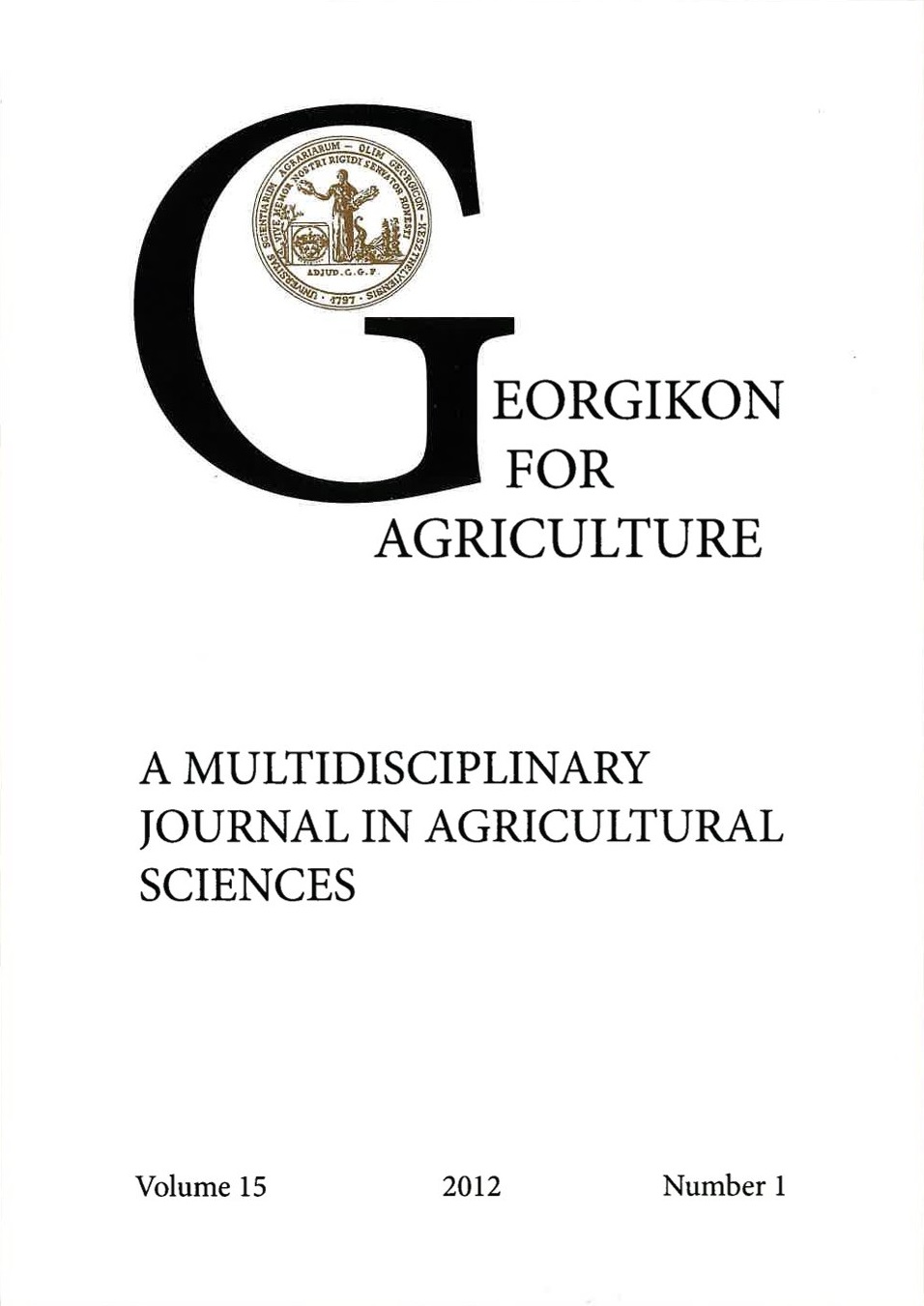Examination of eye irritancy by using two alternative methods
Keywords:
chorioallantoic membrane, in vitro, rabbit, Draize-test, HET-CAM test, MTT-AssayAbstract
Agrochemicals must undergo numerous toxicological tests before registration. To get knowledge about eye irritation, nowadays only the in vivo Draize-test is accepted, which is one of the most criticized methods because of the injuries of the test animals. Therefore, several in vitro tests have been developed to replace in vivo eye irritation testing. Two of these alternative methods, the MTT-Assay and the HET-CAM test (Hen’s Egg Test – Chorioallantois Membrane) were used in our comparative screening, with a set of agrochemicals to establish parallel data on in vitro and in vivo (Draize) results. The examined products were:Systhane 12 E (miclobuthanyl, 125 g/l), Clinic 480 SL (glyphosate isopropylamin salt 360 g/l), Targa Super 5 EC (quizalofop-P-ethyl 5%), TrendTM (isodecyl acetate), Silwet L-77 (polyalkylenoxid 84%, iso-propylene 16%) and Substral (66 g/l nitrogen, 30 g/l P2O5 watersoluble phosphate, 67 g/l water-soluble K2O). In these experiments, the same results were obtained in the alternative tests and in the Draize test which shows that the methods applied may be possible the replace the in vivo test as a test system in the future.
References
Balls. M., Berg, N., Bruner, L.H., Curren R., deSilva, O., Earl, L. K., Esdaile, D. J., Fentem, J. H., Liemsch, M., Ohno, Y., Prinsen, M. K., Spielmann, H. and Worth, A. P. 1999. Eye irritation testing: the way forward. The report and recommendations of ECVAM workshop 34. ATLA. 27. 53–77.
Bordás, S. 1971. A növényvédő szer mérgezés elsősegélynyújtása. Mezőgazdasági és Élelmezésügyi Minisztérium. Budapest, 1971. 21.
Budai, P., Fáncsi, T., Várnagy, L. and Fejes, S. 2002. Effects of irritative pesticides and a technical component on tissue structure of CAM. Georgikon for Agric. 13. 87–96.
Budai, P., Kiss, Zs. I., Somlyay, I. M. and Várnagy, L. 1998. ln vitro irritancy test on hen's eggs with some pesticide components. Med. Fac. Landbouww. Univ. Gent. 63 (2a) 315–319.
Budai, P., Somlyay, I., Várnagy, L. and Varga, T. 1995. Comparison of in vitro (HE'I'-CAM) and in vivo (Draize) irritation tests using different pesticides. Med. Fac. Landbouww. Univ. Gent. 60 (2b) 593–597.
Budai, P. and Várnagy, L. 2000. In vitro ocular irritation toxicity study of some pesticides. Acta Vet. Hung. 48. 221–228. https://doi.org/10.1556/avet.48.2000.2.10
Budai, P., Várnagy, L., Somlyay, I. and Varga, T. 1997. Ocular irritation study of some pesticides in HE'I'-CAM test. Med.. Fac. Landbouww. Univ. Gent. 62 (2a) 265–268.
Draize, J. H., Woodard, G. and Calvery, H. O. 1944. Methods for the study of irritation and toxicity of substance applied to the skin and mucous membranes. J. Pharmac., exp. Ther. 82. 377 p. https://doi.org/10.1016/S0022-3565(25)08751-8
Invittox Protocol Number 17. MTT ASSAY 1990.
Invittox Protocol Number 47. HET-CAM test 1990.
Kay, J. H. and Calandra, J. C. 1962. Interpretation of eye irritation tests. J. Soc. Cos. Chem. 13. 281–289.
Leighton, J., Nassauer, J. and Tchao, R. 1985. The chick embryo in toxicology: an alternative to the rabbit eye. Fd. Chem. Toxic. 23 (2) 293–298. https://doi.org/10.1016/0278-6915(85)90031-6
Luepke, N. P. and Kemper, F. H. 1986. The HET-CAM test: an alternative to the Draize eye test. Fd. Chem. Toxic. 24 (6–7) 495–496. https://doi.org/10.1016/0278-6915(86)90099-2
Luepke, N. P. and Wallat, S. 1987. HET-CAM reproducibility studies. Alternative Methods in Toxicology. 5. 353–363.
OECD 2002. OECD Guidelines for the Testing of Chemicals No. 405: Acute Eye Irritation/Corrosion.14pp. Paris, France: Organisation for Economic Cooperation and Development. OECD Guideline for Testing of Chemicals no. 438. Isolated Chicken Eye Test Method for Identifying Ocular Corrosives and Severe Irritants. Adopted 08th September 2009.
Walum, E., Balls, M. et al. 1992. ECITTS: An integrated approach to the application of in vitro test systems to the hazard assessment of chemicals. ATLA. 20. 416. https://doi.org/10.1177/026119299202000307
Downloads
Published
Issue
Section
License
Copyright (c) 2012 Tavaszi Judit, Kormos Éva, Pálovics Ágnes

This work is licensed under a Creative Commons Attribution-NonCommercial-NoDerivatives 4.0 International License.
Cikkre a Creative Commons 4.0 standard licenc alábbi típusa vonatkozik: CC-BY-NC-ND-4.0. Ennek értelmében a mű szabadon másolható, terjeszthető, bemutatható és előadható, azonban nem használható fel kereskedelmi célokra (NC), továbbá nem módosítható és nem készíthető belőle átdolgozás, származékos mű (ND). A licenc alapján a szerző vagy a jogosult által meghatározott módon fel kell tüntetni a szerző nevét és a szerzői mű címét (BY).




